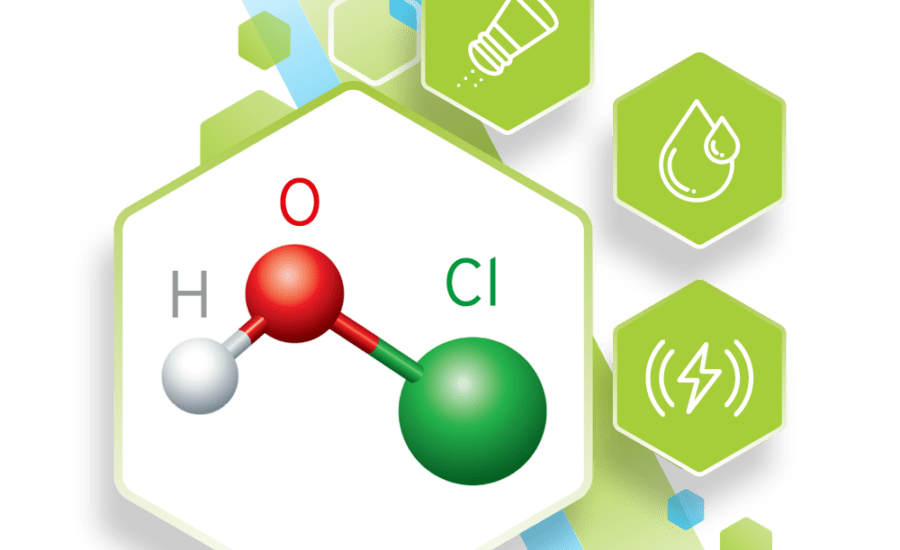Unlocking the Power of Hypochlorous Acid: The Ultimate Guide to Its Benefits and Uses
In an age where health and safety are paramount, hypochlorous acid is emerging as a powerful ally. This remarkable compound, known for its natural antibacterial and antiviral properties, is making waves across various industries, from healthcare to household cleaning. But what exactly makes hypochlorous acid so special? In this ultimate guide, we will delve into the myriad benefits and versatile applications of hypochlorous acid, revealing how it can enhance your daily life and promote a safer environment. Whether you’re looking to disinfect your home, improve skincare routines, or explore innovative uses in agriculture, the potential of hypochlorous acid is nothing short of transformative. Join us as we unlock the secrets of this incredible compound and discover how it can positively impact your health and wellbeing. Embrace the future of safe, effective solutions and learn how hypochlorous acid can elevate your lifestyle.
The Science Behind Hypochlorous Acid
Hypochlorous acid (HOCl) is a weak acid that forms when chlorine dissolves in water. It’s an integral part of the human immune system, produced by white blood cells to fight infections. This compound’s unique biochemical properties enable it to eliminate pathogens effectively without causing harm to human tissues. Unlike other disinfectants, hypochlorous acid operates at a neutral pH, making it safe for various applications. The science behind hypochlorous acid lies in its ability to disrupt the cell membranes of bacteria and viruses, leading to their rapid destruction.
One of the fascinating aspects of hypochlorous acid is its selective antimicrobial activity. When produced by immune cells, it targets invading pathogens while sparing the body’s own cells. This selective mechanism makes HOCl particularly valuable in medical applications, where it can be used to treat wounds and infections without damaging healthy tissue. Additionally, hypochlorous acid is effective against a broad spectrum of microorganisms, including bacteria, viruses, and fungi. This wide-ranging efficacy is crucial for ensuring comprehensive disinfection and prevention of infection.
The production of hypochlorous acid involves electrolysis of a saline solution, which is a simple yet powerful process. This method can be easily scaled for various uses, from small household devices to large industrial systems. The versatility in its production and application underscores the potential of hypochlorous acid as a revolutionary disinfectant. Understanding the science behind HOCl helps us appreciate its role in promoting health and safety across different settings, from clinical environments to everyday life.
Key Benefits of Hypochlorous Acid
Hypochlorous acid offers numerous benefits that make it a standout among disinfectants. Firstly, its efficacy in killing pathogens is unparalleled. HOCl is capable of neutralizing bacteria, viruses, and fungi within seconds of contact, which is significantly faster than many conventional disinfectants. This rapid action is essential in environments where timely infection control is critical, such as hospitals and food processing plants.
Another key benefit of hypochlorous acid is its safety profile. Unlike harsh chemicals like bleach and
alcohol-based disinfectants, HOCl is non-toxic and non-irritating to humans. This makes it suitable for use on sensitive skin, mucous membranes, and even open wounds. For individuals with respiratory conditions or chemical sensitivities, hypochlorous acid provides a safer alternative for maintaining hygiene and sanitation.
Environmental sustainability is another major advantage of hypochlorous acid. As a naturally occurring compound, HOCl breaks down into non-toxic byproducts, reducing environmental impact. Traditional disinfectants often leave harmful residues that can pollute waterways and harm ecosystems. In contrast, hypochlorous acid decomposes into water and salt, making it an eco-friendly option for large-scale sanitation efforts.
Uses in Healthcare and Wound Care
In healthcare settings, hypochlorous acid is proving to be a game-changer. Its ability to eradicate pathogens without harming human tissues makes it ideal for wound care. HOCl solutions can be applied directly to wounds to prevent infection and promote healing. Studies have shown that hypochlorous acid reduces microbial load and inflammation, accelerating the recovery process. This is particularly beneficial for chronic wounds, such as diabetic ulcers and pressure sores, where infection control is paramount.
Hypochlorous acid is also used in surgical environments to disinfect instruments and surfaces. Its rapid antimicrobial action ensures that surgical tools are free of pathogens, reducing the risk of postoperative infections. Additionally, HOCl can be used to sanitize operating rooms, thus creating a safer environment for patients and healthcare providers. The non-toxic nature of hypochlorous acid means it can be used extensively without the risk of harmful exposure, which is a significant advantage over traditional chemical disinfectants.
Beyond wound care and surgical applications, hypochlorous acid is beneficial for general hygiene in healthcare settings. It can be used to disinfect hands, surfaces, and medical equipment, ensuring comprehensive infection control. The versatility and safety of hypochlorous acid make it a vital tool in the fight against
healthcare-associated infections (HAIs), which are a major concern worldwide. By integrating HOCl into routine cleaning and sanitation protocols, healthcare facilities can enhance patient safety and improve outcomes.
Applications in Food Safety and Sanitation
Food safety is another domain where hypochlorous acid shines. The food industry faces constant challenges in preventing contamination and ensuring the safety of products. HOCl solutions can be used to sanitize food processing equipment, surfaces, and even the food itself, without altering its taste or quality. This is particularly important for fresh produce, which can harbor harmful bacteria like E. coli and Salmonella. Hypochlorous acid effectively kills these pathogens, reducing the risk of foodborne illnesses.
In addition to sanitizing food and equipment, hypochlorous acid can be used in water treatment for food processing facilities. Contaminated water can be a source of microbial contamination, jeopardizing food safety. HOCl can be added to the water supply to eliminate pathogens and ensure that the water used in food processing is safe. This application is crucial for maintaining hygiene standards and preventing outbreaks of foodborne diseases.
Packaging and storage are other areas where hypochlorous acid can enhance food safety. HOCl can be used to disinfect packaging materials, ensuring that they do not introduce contaminants to the food. Additionally, hypochlorous acid can be used in cold storage facilities to maintain sanitary conditions and prevent microbial growth. The ability of HOCl to provide comprehensive sanitation solutions makes it invaluable in the food industry, where safety and quality are of utmost importance.
Hypochlorous Acid in Cleaning Products
The use of hypochlorous acid in cleaning products is gaining popularity due to its efficacy and safety. Traditional cleaning agents often contain harsh chemicals that can irritate the skin and respiratory system. In contrast, HOCl-based cleaners are gentle yet powerful, making them suitable for cleaning surfaces, fabrics, and even air. Hypochlorous acid can be used to disinfect kitchen countertops, bathroom fixtures, and high-touch areas like doorknobs and light switches, ensuring a hygienic environment.
One of the standout features of hypochlorous acid in household cleaning is its ability to eliminate odors. Many conventional cleaners mask odors with fragrances, but HOCl targets the source of the odor by killing
odor-causing bacteria. This results in a fresher and cleaner living space without the need for artificial scents. Hypochlorous acid’s deodorizing properties make it ideal for use in kitchens, bathrooms, and pet areas, where odors can be particularly stubborn.
Hypochlorous acid is also safe for use around children and pets. Traditional disinfectants can pose risks if ingested or if they come into contact with skin. HOCl, on the other hand, is non-toxic and non-irritating, making it a safer choice for households with vulnerable members. Parents and pet owners can use hypochlorous acid
to maintain a clean and safe environment without worrying about harmful chemical exposure. The versatility and safety of HOCl make it a valuable addition to any household cleaning regimen.
Environmental Impact and Safety Considerations
The environmental impact of hypochlorous acid is a significant factor that sets it apart from other disinfectants. As mentioned earlier, HOCl breaks down into harmless byproducts, reducing pollution and environmental damage. This is in stark contrast to traditional disinfectants, which can leave toxic residues that contaminate water supplies and harm wildlife. The eco-friendly nature of hypochlorous acid makes it an ideal choice for large-scale sanitation efforts, including public spaces, schools, and healthcare facilities.
Safety considerations are also paramount when evaluating disinfectants. Many conventional disinfectants contain chemicals that can be harmful to human health, causing skin irritation, respiratory problems, and other adverse effects. Hypochlorous acid, however, is non-toxic and non-irritating, making it safe for use in a variety of settings. This is particularly important for individuals with allergies or sensitivities to chemical cleaners. By choosing hypochlorous acid, users can maintain hygiene standards without compromising their health.
The production process of hypochlorous acid also contributes to its environmental and safety advantages. Electrolysis of saline solution is a straightforward and efficient method that does not require harmful chemicals. This production method can be easily scaled to meet the needs of different applications, from small household devices to large industrial systems. The simplicity and sustainability of hypochlorous acid production further highlight its potential as a revolutionary disinfectant.
Comparing Hypochlorous Acid to Other Disinfectants
When comparing hypochlorous acid to other disinfectants, several factors come into play, including efficacy, safety, and environmental impact. In terms of efficacy, hypochlorous acid is highly effective at killing a wide range of pathogens quickly. Studies have shown that HOCl can eliminate bacteria, viruses, and fungi faster than many conventional disinfectants. This rapid action is crucial in settings where timely infection control is essential.
Safety is another area where hypochlorous acid outshines traditional disinfectants. Many chemical disinfectants, such as bleach and alcohol-based cleaners, can cause skin irritation, respiratory problems, and other health issues. Hypochlorous acid, on the other hand, is non-toxic and non-irritating, making it safe for use on skin, mucous membranes, and around vulnerable individuals. This safety profile is a significant advantage for households, healthcare facilities, and food processing environments.
Environmental impact is a critical consideration in the choice of disinfectants. Traditional disinfectants can leave harmful residues that pollute water supplies and harm ecosystems. Hypochlorous acid, however, breaks down into harmless byproducts, reducing environmental damage. This eco-friendly nature makes HOCl a responsible choice for large-scale sanitation efforts. By comparing these factors, it’s clear that hypochlorous.
Conclusion and Future Perspectives on Hypochlorous Acid
As we look to the future, the potential of hypochlorous acid is truly transformative. Its efficacy, safety, and environmental benefits make it a powerful ally in the quest for health and hygiene. From healthcare and wound care to food safety and household cleaning, hypochlorous acid is revolutionizing the way we approach sanitation. By integrating HOCl into routine practices, we can enhance safety and wellbeing across various domains.
Future perspectives on hypochlorous acid are promising, with ongoing research exploring new applications and innovations. Advances in production technology are making HOCl more accessible and cost-effective, paving the way for widespread adoption. Additionally, the development of hypochlorous acid-based products for skincare, agriculture, and water treatment is expanding the horizons of this remarkable compound. As we continue to unlock the power of hypochlorous acid, we can expect to see its impact grow, promoting a safer and healthier world.
In conclusion, hypochlorous acid is more than just a disinfectant—it’s a versatile and transformative solution
that addresses some of the most pressing challenges in health and hygiene. By understanding its benefits and uses, we can harness the power of HOCl to enhance our daily lives and create a safer environment. Embrace the future of safe, effective solutions with hypochlorous acid and discover its potential to elevate your lifestyle.
The Quality of The Hypochlorous Acid is Crucial in Healthcare
Hygieia-san produces high-quality, stable hypochlorous acid (HOCl). Hygieia-San HOCl solutions are known for their long shelf life (12-18 months) and ability to maintain efficacy even after opening, unlike some other HOCl products. They are also recognised for their regulatory expertise and compliance with EU and UK biocide regulations.
The quality of the hypochlorous is key for efficacy, which can only be achieved by using our ECA machines technology to create stabilised HOCl using purified water and our electrolysing process of the saline solution.




